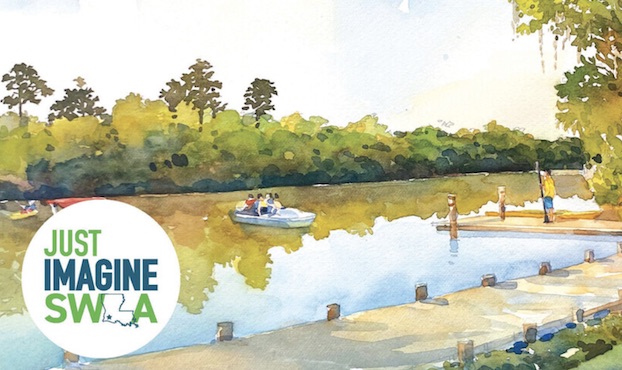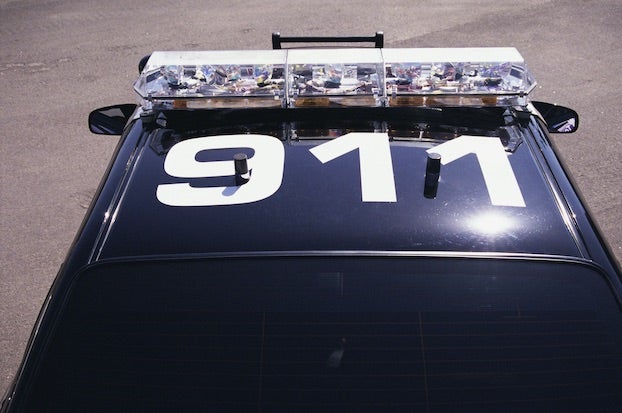Just Imagine: Green infrastructure
Published 9:53 am Friday, May 27, 2022
Editor’s Note: This is the first in an 11-part series detailing the final 10 catalytic projects of the 50-year Just Imagine resilience plan. All of the projects are based on input from area residents, high school students, business and nonprofit leaders and elected officials. The final three Community Engagement Sessions in which residents can offer their feedback on the projects will be June 6-8.
♦
Rachel Judson is a Lake Charles native and senior at McGill University.
♦
Lord willing and the creek don’t rise, Calcasieu and Cameron parishes are recovering from the laundry list of disasters that was 2020 and 2021. Except, the creek did rise, it has always risen, and it’s a matter of time until it rises again. Fortunately, it appears the universe really is willing us forward.
SWLA is equipped with willpower, money, and expert resources regarding what has and has not worked for communities in similar situations around the world. Community input shaped ten catalytic projects to be highlighted in this column over the next ten days. As a prelude to discussion on the ten projects, a noteworthy element incorporated into nearly all projects is green infrastructure. This concept is essential to the success of all catalytic projects because it will, Lord willing, prevent a rising creek from uprooting our lives again.
Infrastructure of the built environment can be categorized as gray, blue, or green. Gray infrastructure refers to hard structures like roads, retention ponds, seawalls, dams, and parking lots. Gray infrastructure comprises the majority of the built environment in our area. Existing blue infrastructure in our area includes waterways like coulees and lakes. Green infrastructure seeks to mimic the natural environment through permeable surfaces that absorb water, divert runoff, and improve soil quality.
Some of my favorite individually achievable examples are enhanced tree canopies, rain gardens, and swales (think beautiful roadway edges designed to absorb water). Essentially, green infrastructure uses the natural environment to our advantage.
Green infrastructure is a rewarding investment because it enables us to continue living here. Better yet, green infrastructure promises a return on investment through lower maintenance costs than gray infrastructure, adaptability, and resiliency in a changing environment. Advantages include reducing storm damage, absorbing water, providing shade, combating pollution, beautification, and an abundance of mental health benefits.
Trees alone offer myriad benefits to our area in terms of identity, health, and happiness. Our people have strong roots in areas with names like Oak Park and Little Chenier (meaning little oak tree area). Take a drive down Enterprise Blvd, a noticeably green street in Lake Charles. Here, oaks were planted in the 1940s by a group of women called the Enterprise Club.
Homes adjacent to these oak trees fared better than those without protection in 2020. These trees continue to make returns on the initial investment eighty years later. Green infrastructure is as complex as coastal protection and as simple as planting a native tree in your yard. From Hong Kong to Houston, green infrastructure is working when the creek rises.
Green and blue infrastructure are integral elements of our collectively reimagined SWLA. Nature-based solutions offer an improved quality of life at all scales. At the community scale, complex green and blue infrastructure are foundations of the Coastal Risk Reduction, Bayou Greenbelt, McNeese, and Chennault/SOWELA resilience district projects. These proposals feature layered gray, green, and blue infrastructure to use the landscape as a tool for protection, recreation, and economic and academic development.
Imagine if you and your friends, baseball team, or Mardi Gras krewe planted trees to reduce storm damage, absorb water, and provide shade in the August heat. Would you go for more walks? Fare better in the next storm? Enjoy life a little more?
Why restrict sportsman’s paradise to deep in the marsh when paradise is possible in residential and commercial areas? Imagine strolling down a shady shoreline around any body of water in SWLA, kids climbing neighborhood trees, or less charming, parking under a tree in a parking lot. Just imagine. It’s time to sow more seeds.
Be a part of this opportunity to reimagine the value of green infrastructure in SWLA, particularly the urban tree canopy, and build support for local action. Tell your friends, baseball team, and krewe. Learn more about green infrastructure and the other ten projects by visiting www.justimagineswla.com and attending a community meeting June 6th, 7th, or 8th!






